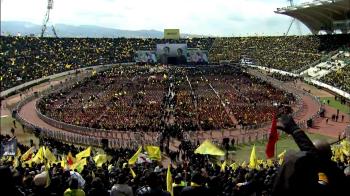Alwaght- Informed sources in Saudi Arabia are suggesting that tens of members of the Saudi Arabian royal family have left the country to live in other countries following ascension of King Salman bin Abdulaziz to the throne. Reports have also emerged saying that a number of the ruling family members are now banned from leaving the Arab kingdom and even are monitored by the security agencies. While gaps keep deepening over the power seizure and also over the performance of the current rulers in dealing with the regional cases, some of the royal members have raised concerns about spark of a series of assassinations and clashes inside the Al Saud family.
Regardless of the veracity of the reports finding their way to the public through media, we can see signs of such a power struggle inside the kingdom and among the princes particularly since the recent decades and even years. For example, in terms of succession the kingdom witnessed some ups and downs in the princes' rise to power. The outcome of this has been rifts and thus tensions between the deceased king's brothers and the grandchildren.
Since 1964 when Saudi Arabia saw a silent coup against King Saud and King Faisal’s rise to power, this process of struggles started and continued to date. King Faisal’s coming to power itself caused feud between some brothers who supported the principle of seniority in power transition and advocated some reforms inside the kingdom’s body. Prince Talal bin Abdulaziz's escape to Egypt along with his brother Turki II and forming a circle of liberalists there was another showcase of these divisions. Assassination of King Faisal by his nephew Faisal bin Musaid in 1975 was driven by personalized enforcement of law that accompanied modernization of the Saudi community.
Rise of King Fahd in 1982 while he had older brothers like Naser, Mohammad, and Abdel Mohsen alive was another source of tensions in House of Saud. King Fahd's picking of Prince Abdullah bin Abdulaziz, his half-brother, as his crown prince triggered a wave of differences between Sudairi family and the ruling family of Saud. The Sudairi brothers, also known as Sudairi Seven, argued why King Fahd should choose Abdullah while he had full brothers like Naif, Sultan, and Salman. Following ascension of Abdullah to power in 2005, he picked a crown prince from the Sudairi brothers, a move reignited discontent of other brothers.
King Abdullah's establishment of the Allegiance Council in 2007, which was described by some analysts as an act of bypassing the brothers and the power institutions in the kingdom, indicated that use of the personal taste by the princes to reach power in a regime that is based on the person's role and position and the circles around him is something possible.
Furthermore, the measures of current King Salman must be added to the list. When he rose to power in February 2015, the ruling family saw withholding the crown prince post from Muqrin bin Abdulaziz and nine of other living brothers. Instead, Muhammad bin Naif and Mohammed bin Salman were picked as the new administration's crown prince and deputy crown prince respectively. They both are from the grandchildren generation. Such a step raised the hackles of Salman’s brothers like Abdul Elah, Ahmed, Abdul-Rahman, and others, all are sons of Abdulaziz. They even did not attend the ceremony of the “day of allegiance” to King Salman.
This line of brothers believes that with this measure King Salman actually betrayed the order of the founding King Abdulaziz, which says as long as his sons are alive, the grandchildren will not ascend to the throne. Meanwhile, Mohammad bin Salman's power gain and to some extent concentration of power in his hand and his authoritarian approach in administering the Council of Economic and Development Affairs as well as the defense ministry which disturbed the Saudi Arabian conservative and slow-moving policy have sent the other princes worried.
So a review of the struggles inside the royal family shows application of personalized and lateral approaches in the Al Saud family is something ordinary, leading to rifts in decisive junctures. But the distinction between the prior times and the current time is a will for monopolization of power by a single hand. Although the earlier Saudi monarchs had the leverage and right to make decisions and incorporate personal views in power structure, they usually relied to such traditions as consensus, allegiance, and seniority to settle the problems to steer clear of tense situation among the princes. But at the present time, the ambitions of King Salman and his son Mohammed caused the traditional power distribution to shift to seizure of power in the king’s family, something heightening and exposing the concerns of other brothers and princes of the royal family.



























